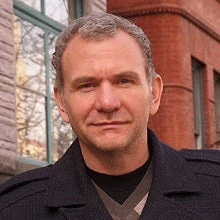PovcalNet released new poverty estimates last week, indicating that in 2015, 10 percent of the global population were living on less than the international poverty line (IPL), currently set at US$1.90 per person per day in 2011 purchasing power parity (PPP). This estimate is based on a series of new data and revisions, including more than 1,600 household surveys from 164 countries, national accounts, population estimates, inflation data, and purchasing power parity data. The new poverty numbers were released on September 19 and will be part of “Poverty and Shared Prosperity 2018: Piecing Together the Poverty Puzzle,” a report to be published on October 17, End Poverty Day.
We’re also launching a Global Poverty Monitoring Technical Note Series which describes the data, methods and assumptions underpinning the World Bank’s global poverty estimates published in PovcalNet. With this update, we’re releasing four new notes in this series, including the “What’s New” note that will accompany each of the semi-annual updates to PovcalNet. The other notes cover different aspects of the price adjustments embedded in the global poverty estimates, such as adjustments for inflation and price differences across countries
Begun as a research project by Martin Ravallion, Shaohua Chen and others, PovcalNet has become the official source for monitoring the World Bank’s Twin Goals, the Millennium Development Goals (MDG), and now Sustainable Development Goal 1.1. PovcalNet is managed jointly by the Data and Research Groups within the World Bank’s Development Economics Division. It draws heavily upon a strong collaboration with the Poverty and Equity Global Practice, which is responsible for gathering and harmonizing the underlying survey data.
PovcalNet does much more than simply providing the most recent global poverty estimates. It’s a computational tool that allows users to estimate poverty rates for regions, sets of countries or individual countries, over time and at any poverty line. It also provides several distributional measures, such as the Gini index and income shares for the various decile groups.
The most recent PovcalNet data show us that over the last few decades, remarkable progress has been made in reducing extreme poverty. The world attained the first MDG target—cutting the 1990 poverty rate in half by 2015—six years ahead of schedule. With continued reductions, the global poverty rate, defined as the share of world’s population living below the IPL, has dropped from 35.9 percent in 1990 to 10 percent in 2015 – more than a 70 percent reduction.
In the last quarter century, global poverty dropped by more than 70 percent
This analysis (and much more) will be made available in the abovementioned “Poverty and Shared Prosperity 2018: Piecing Together the Poverty Puzzle” report, which is the result of a close collaboration between the World Bank’s Research Department, and the Poverty and Equity Global Practice. See the press release for a preview of the report and a description of the latest estimates of extreme poverty.
Reducing poverty from 10 percent in 2015 to 3 percent by 2030 (the target set by the World Bank to monitor its goal of ending poverty) will require an additional 7-point reduction in poverty over the next several years. If over the last 25 years, poverty has steadily declined at one point per year, it would seem reasonable to assume that the world is well on track to reduce poverty by at least 7 points by 2030. But there are reasons for concern. For one, there’s evidence that the rate of poverty reduction has recently slowed. Between 2011 and 2013, poverty declined by 2.5 percentage points, but over the two years between 2013 and 2015, it declined by only 1.2 points. While this deceleration in the rate of poverty reduction over the last two years should be interpreted with caution due to data and measurement challenges, it’s a potential sign of change.
One reason poverty reduction is slowing down is due to the changing geographic concentration of poverty. The rate of poverty reduction is affected by the rate of economic growth and shared prosperity in those countries where the majority of the poor live. In 2015, more than half of the global poor lived in Sub-Saharan Africa, and more than 85 percent of the poor lived in either Sub-Saharan Africa or South Asia (see this visualization of the changing geographic distribution of poverty). As the geographic concentration of the poor has shifted from higher growth regions (East Asia and, more recently, South Asia) to lower growth regions, the rate of poverty reduction has slowed. In South Asia, both the poverty rate and number of poor have been steadily declining, which is in sharp contrast with Sub-Saharan Africa, where the total number of poor people has actually been increasing over time.




Join the Conversation